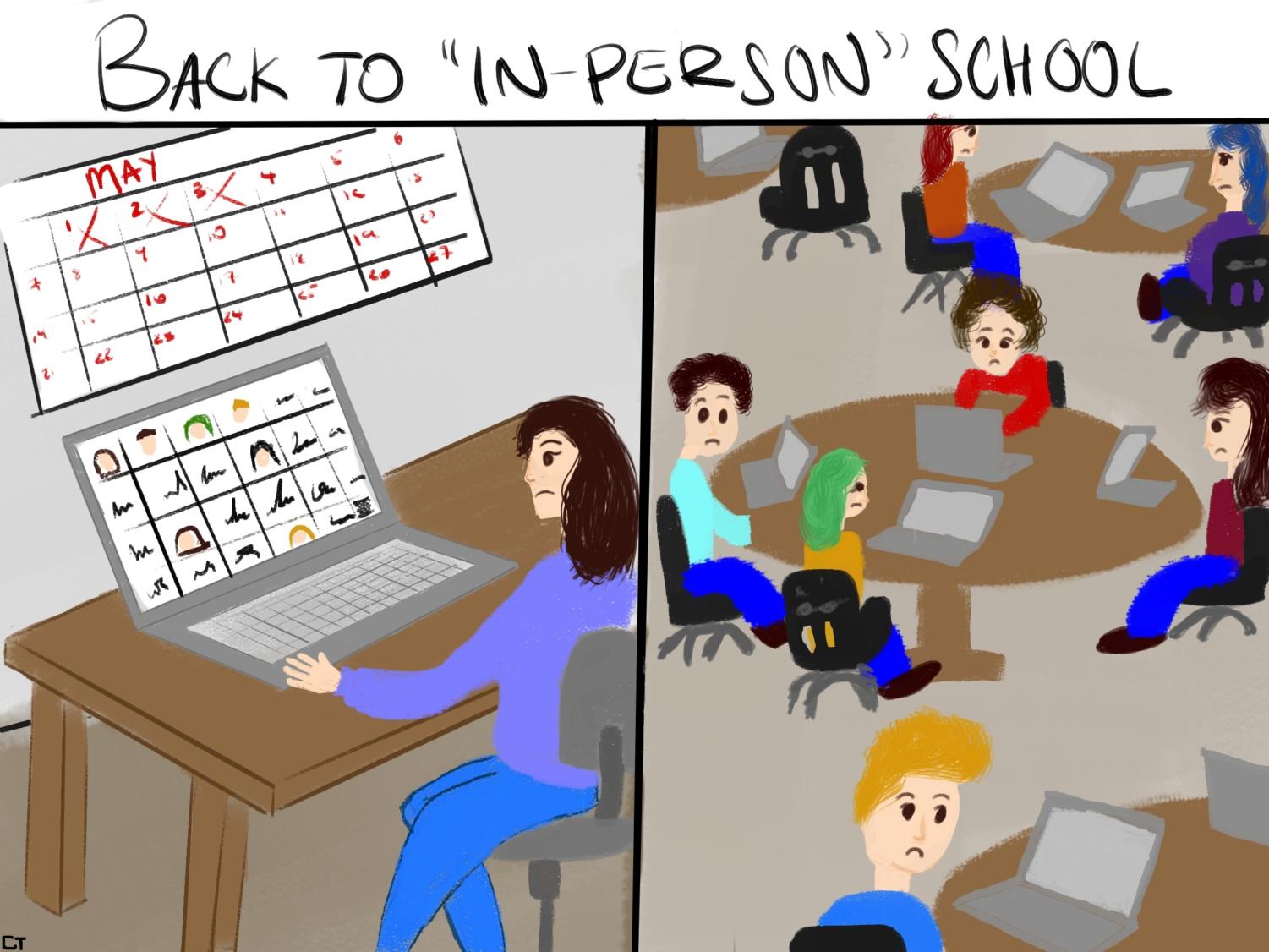Opinion: Returns to normal after COVID-19 shouldn’t stop progress or innovation
October 8, 2021

While COVID-19 stole many opportunities from us, it is in the “return to normal” that we have lost some of the most important chances for progress. With all of the adjustments that we had to make recently because of the pandemic, we could have taken it a step further and worked to improve and reform the education system. After a year of virtual learning, additional changes to improve students’ school experiences would be a fitting development now more than ever. Coming back from distance learning and from Covid could have been a catalyst for change and progress, not a return to normal that was in dire need of innovation and upgrades.
The fact that school systems nationwide did not seize the opportunity for growth is a direct and disappointing reflection of our hesitancy towards progress and tendency to cling to past tradition.
We have known for years that the USA’s education system is outdated. For the country that likes to believe it is “No. 1,” we are far from it, according to the Organization for Economic Cooperation and Development (OECD) which is a forum where 37 democratic countries that account for three-fifths⅗ of the world’s GDP work together to develop policies to promote sustainable growth globally. OECD provides these nations with a way to compare experiences and quality of services with others. OECD’s Better Life Index, which is used to internationally compare measures of well-being for different nations, ranked the US education system as eighth in the world. The PISA, or the OECD’s Programme for International Student Assessment, which evaluates educational systems by measuring the scholastic performance in various subjects of high schoolers, has also indicated that the US has been stagnant in reading and math since 2000, despite efforts to improve the standard of American education and to be more competitive with other nations. While this data may not seem important to some due to its dependency on standardized tests which doesn’t fully capture an educational system’s performance, the fact that America’s education system performed so poorly based on any set of measures should be deeply concerning.
What other nations have done that the US hasn’t is adapted their educational systems to meet the current needs of their students. Finland, which admittedly has one of the most homogenous populations on the planet making it easier to institute expansive policies, has given its students agency over their learning by keeping homework and standardized testing at a minimum (typically using little to none of both). Sweden has even adopted outdoor schools to promote independent learning and creativity.
While many developed countries have taken steps to better their educational systems, the US hasn’t done the same. Instead, we’ve been operating with the same factory-like model of education that was created more than 100 years ago, despite the dramatic social and technological shifts since then.
Students in the United States are still forced to do busy work just to fill a class period to the required 88 minutes of “instruction.” We are also often discouraged from exploring our passions inside of school in favor of mandatory classes and credits we need to get for graduation. We are still forced to take standardized tests so that we can be judged on one uniform metric. We are all taught in the same ways and with little flexibility to accommodate different learning styles. Despite all that has changed since the industrial revolution, our schools still appear to prioritize standardization, be it in the style of education with Common Core or with producing “well-rounded” students.
For the US to be the world leader it claims that it is, we cannot continue to hold onto the past as we have been for over 100 years. We cannot continue to value tradition and standardization above all else. Education is one of the most important foundations of society. If we want to be pioneers in this ever-changing world then we must also prioritize progress in education.
We saw a glimpse of this progress and creativity during virtual learning. Despite losing nearly every tool typically used in schools, districts were able to teach students. They were able to provide valuable instruction amid the completely unexplored territory of distance learning. While there undeniably were issues with this model, students were also given more freedom and flexibility
This is why this decision to not implement any changes as we returned to in-person schooling was so disappointing. As we shifted from a system where nearly all students were learning from home virtually, PUSD could have offered students more flexibility by keeping some virtual learning options. They could have eased the transition into in-person learning by using cohorts or maintaining aspects of the cohort model. PUSD could have changed the school schedule around to increase student’s ability to choose what to do with their time by offering asynchronous days or dedicating more time for periods like wolverine time. They could have even shifted away from requiring students to be in a class for mandatory instruction minutes for attendance and instead could have used a system where we submitted work like we did virtually.
Sadly, despite all the things PUSD could have done, we did not continue on this course of innovation. We returned back to the same school we left nearly two years ago and to the same model created more than a century ago.
This is not something we should accept. We need to do better. We need to make sure that this glimpse of progress doesn’t fade away. We need to work towards not letting the innovative thinking that we had during virtual learning and that we could have had this year this be yet another missed opportunity.


